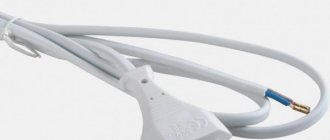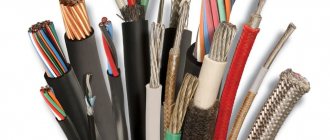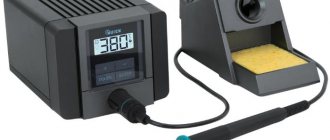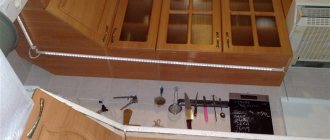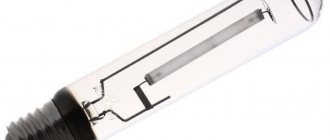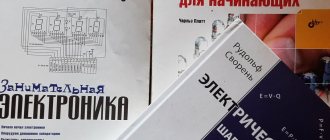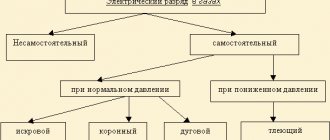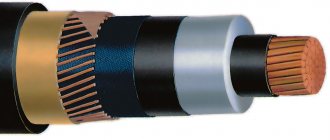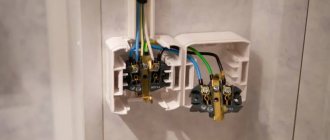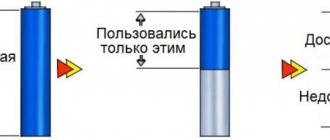Many people still believe that a screwdriver blade can only be of two types:
- splined - Ps
Popularly referred to as “minus” - flat.
The very concept of slot (schlitz) is translated from German as a groove or slot.
- cruciform
Moreover, as some believe, they differ from each other only in size (width and thickness of the tip) or diameter.
In fact, the shape of the cross-shaped profile also plays a significant role.
Moreover, the “cross” itself appeared much later than the slot. Due to the massive introduction of screwdrivers, using a straight slot with these devices has become not entirely convenient.
Therefore, we gradually switched to a cruciform shape. It centers better and is much easier to work with.
Screwdriver profile Ph
The cross-head slot we are used to was invented back in the 30s. A few years later, the patent for this invention was bought by the enterprising Henry Phillips.
G. Phillips patent for Ph profile
This profile was named in his honor - Ph = Phillips. Just don't confuse the Philips company from the Netherlands (with one L) with the Phillips Screw Company founded in the USA.
We know the first one well from televisions, cassettes, high-quality lighting devices, etc. But the second one gave us variety in threaded fasteners.
At first glance, Ph is a simple cross, narrowed to the base and nothing more. It would seem that there is nothing to invent and patent here?
But this is not true at all. The Ph profile is made strictly at a certain angle of 55 degrees and with an inclination of the side surface of each face.
Thanks to this, if you start tightening screws or screws with extreme force, risking overtightening them, the bit or sting will simply pop out of the head of the screw or screw without damaging the fastener itself.
As you know, this was not done by accident. In this way, a certain tightening torque was achieved when using the tool on flow assemblies of the automotive industry and aircraft manufacturing in the USA.
Subsequently, with the invention of torque ratchets, screwdrivers and screwdrivers, as well as increased requirements for precise tightening torque, this began to work to the detriment.
In practical terms, this means that you don't have to mutilate the Ph bit if it starts popping out of the fastener. It turns out that the limit of the screw's tightening ability has been reached and there is no need to turn it any further.
Two types of cross bits
PH stands for Phillips. It has the shape of a regular cross. Good idea. There are practically no cons. It was first developed by Phillips engineers.
PZ – stands for Pozidrive. It has the shape of a cross with characteristic notches between the edges.
The Ph bit is more versatile. It can be used to tighten both Ph and Pz screws. The only thing is that it dangles in the Pz screw. Because it has less completeness.
With a Pz bat you can only spin Pz; it doesn’t fit into Ph and breaks off the edges.
Bit marking
Each bit is marked. Either a sticker has been pasted, or the value for which screw it is suitable for has been punched out with a press. That is, the same Ph or Pz and its dimensions 1, 2, 3. About the dimensions a little lower.
Bit size
Bit lengths are 25 mm, 50 mm, 70 mm, 90 mm, 120 mm, 160 mm, 200 mm.
But besides length, they also differ in numbers. The Ph bits are marked as Ph 1, Ph 2, Ph 3. The Pz bit is: Pz 1, Pz 2, Pz 3.
As a rule, sizes smaller than Ph 1 and Pz 1 are not used. There are no screws for them.
They can be used somewhere in radio engineering and electronics. There are also no bits larger than Ph 3 and Pz 3. Larger screws have other types of bits, for example, a star or hexagon.
Why does a self-tapping screw need its own bit?
The bit or screwdriver must fit the screw. By the way, recently screwdrivers also indicate which screws it fits.
Read also: Sample tags for a safety harness
Why is it so important to choose the right bat?
Firstly, using the wrong tool, you constantly tear off the cross hole in the screw. This makes it difficult to unscrew the fastener in the future.
Second, you wipe down the edges on the bat itself. Thus quickly rendering it unusable.
I will continue the topic of screwdrivers! ))
Everyone knows a Phillips screwdriver, many know that they come in different sizes, and if you twist a large screw with a small screwdriver, it will break off and the screw will not come out, and if you twist a small screw with a large screwdriver, then the screw itself can be torn off.
But not everyone knows, there are 2 types of Phillips screwdrivers:
— Phillips
(abbreviated
PH
)
— Pozidriv
(abbreviated
PZ
)
Phillips
- a regular Phillips screwdriver, a very old standard, it is gradually being replaced by the newer
Pozidriv
- it has additional notches and modified bevel angles of the tip (tip of the screwdriver) and the slot (the recess in the screw where the tip of the screwdriver is inserted) so that the screwdriver holds in the screw much better than in the old version from Philips.
Many people don’t know the difference, and they wrap whatever they have to and with whatever they have to! )
Of course you can do this, but in screws and screws PH
PZ
screwdriver (like the
PH
in
PZ
screws due to the different bevel angles of the tip and slot) does not fit tightly, there is play, the likelihood of failure increases, the bits (attachments) deteriorate faster - the quality and speed of work drop due to the use of the wrong tool.
You can easily feel how much the PZ
fits more tightly in the
PZ
than in
the PH
(and vice versa).
Therefore, it is, of course, advisable to use the right tool.
Distinguish between screws and PH
from
PZ
it is very easy - in
PZ
there are additional notches in the cross, in
PH
there are none:
Screwdrivers and bits (bits) are even easier to distinguish - in addition to the obvious difference in appearance, they are always marked PZ
or
PH
.
In this example, the screwdrivers and bits are size “1”.
Screwdrivers are always marked with the type and size: in this case PZ1x80mm
This means that this is a screwdriver for a Pozidriv slot of size “1” (1 and 2 are the most popular sizes at home), the length of the working part of the screwdriver is 80 millimeters (there are shortened and elongated screwdrivers).
These particular screwdrivers also have a visual drawing that helps the technician much more easily select the right screwdriver:
Drive screws and PZ
PZ
screwdrivers , and
PH
with
PH
! ))
Phillips (eng. Phillips) is a registered trademark [1] denoting the oldest and most famous type of Phillips recess of threaded fasteners and screwdrivers for them.
Read also: Do-it-yourself power supply from EPR 2x36
History [edit | edit code]
The straight slot has existed, according to some sources, since the 15th century. However, this slot has disadvantages, which were especially evident during the mass assembly of cars and airplanes:
- The screwdriver or screwdriver slips out of the slot, scratching the parts being connected.
- When working with a mechanical screwdriver, there is a risk of breaking the slot or thread (ratchets that accurately measure torque did not yet exist at the time of the invention of the Phillips screwdriver).
In 1933, American John P. Thompson developed screws that solved both problems: they automatically centered the tip and pushed it out when the screw was tightened. Engineer Henry Phillips bought Thompson's patent and founded the Phillips Screw Company. Henry Phillips developed the technology for producing such screws, but was unable to implement it at home. Only in 1937 did he manage to interest the management of the American Screw Company. Such screws were first used in the production of Cadillacs. During World War II, such screws began to be used in the production of military equipment [2].
Thompson was not the first inventor to try to improve the design of the screw: for example, back in 1909, a screw with a square slot was patented by the Canadian Peter L. Robertson. It became widespread mainly in Canada. According to half a legend, Henry Ford at one time experimented with Robertson screws and found that their use significantly speeded up the assembly of cars, but received a refusal from the inventor to sell him a patent, as a result of which he switched to an alternative proposal from Phillips - because of which, according to this According to legend, the Phillips slot, not Robertson, became widespread. However, on Canadian-built Ford cars in the 1920s and 30s, all interior trim elements were attached with Robertson screws.
Features [ edit | edit code ]
Markings and sizes [edit | edit code]
Screwdrivers are marked with letters PH
with slot number - 000 (1.5 mm), 00 (2 mm), 0 (3 mm), 1 (4.5/4 mm), 2 (6 mm), 3 (8 mm), 4 (10 mm) [ 3].
Varieties [ edit | edit code ]
- ACR RIBBED PHILLIPS [4] .
Cross slot with straight serrations against ejection (ACR technology = anti-cam-out recess); distinctive marking - ACR. Compatible with all Phillips screwdrivers.
- PHILLIPS II [5] - an improved version of Phillips.
Cross-shaped slot with inclined notches against ejection; distinctive marking - ACR2. Designed to meet increasingly fast assembly processes where the screwdriver may be ejected from the screw, resulting in damage to the surface of the part; facilitates tightening in difficult installation positions and reduces pressure on the spline - resulting in reduced worker fatigue.
- PHILLIPS SQUARE-DRIVE [6] - Phillips combination with a square spline.
Read also: Do-it-yourself blowtorch forge
Cross slot with notches (ACR technology) combined with a square slot; distinctive marking - PSD = PHILLIPS SQUARE-DRIV Allows significantly higher torque. Only three screwdriver sizes cover the most popular size ranges.
Profile Pz - main differences
In 1966, the same Phillips company modernized its earlier invention and introduced the Pozidrive slot - Pz (Pozidriv) to the world.
Its distinctive feature is:
1Additional edge located in the quarters of the slot.
The bit turns out to be 8-spline. Four main faces, four additional.
At the same time, the heads of self-tapping screws and screws received similar notches. All this allowed for even better centering of the tip.
2The edges of the working surface in Pz, unlike Ph, are made parallel to each other, and not at a narrowing angle.
With Ph, this taper is made specifically so that at the end of the twisting operation, the bit pops out of the head. The so-called self-pushing effect.
When Pz was invented, they abandoned this, shifting the responsibility of limiting the force to the screwdriver or torque tool itself.
3 Ph bits and screwdrivers have a slightly different sharpening angle - 50 degrees.
Thanks to all these modifications, the spline began to fit much deeper into the mounting hole of the fastener. Which led to increased tightening of self-tapping screws.
In simple words, we can say that Pz is a reinforced cross-shaped spline.
PH2 bits: description, purpose
Until 1933, screwdrivers with a straight cut (flat) were used in production, which could easily damage parts, and they turned out to be unsuitable for mechanical tightening of screws. The invention of Phillips screws and the same bits was revolutionary. Henry Phillips bought the patent, and the bits began to be called after him - PH or Phillips. Depending on the size, a number from 0 to 3 is added to the marking. PH2 bits are used in everyday life, the features of which are:
- slot in the form of a cross with a bevel angle of 550;
- the ability to screw screws into soft or thin material;
- When working with a screwdriver, upon completion of tightening, the tip of the bit is pushed out.
Despite the apparent convenience, the main drawback quickly became apparent: the lack of strong adhesion to the surface, as a result of which the edges of the bit and screws “lick off.”
Features, sizes and where to use
Pz is used mainly in furniture assembly and construction.
It is not as common in machine manufacturing or metalworking. This is explained by the fact that due to the greater depth, the posidrive fasteners must have slightly larger heads. Otherwise, their strength decreases and they break off.
Well, a larger size always means more weight, which is often unacceptable in some critical industries.
Moreover, both splines have 5 main dimensions, rigidly tied to the diameter of the fastener.
The most common numbers are 1, 2 and 3. Both Ph and Pz.
The most popular of them is the Pz2. It’s not for nothing that in sets of bits, this size is usually included in 2 pieces. It is used most often and, as a result, wears out most often.
Walking into a hardware store, a knowledgeable buyer immediately tells the sales consultants: “I’d like a set of two Pozidrive bits, please.”
Amateurs and non-professionals usually call them “double plus”! Be literate in such seemingly small but important issues.
However, the correct name is not the key to success. Having the same names, bits from different manufacturers may differ.
The highest quality brands are Wiha, Wera, Milwaukee.
If with the Ph profile everything is still more or less smooth and not everyone can mess up, then with the Pz profile a real disaster happens. Chinese bit manufacturers simply do not follow the sizes and standards.
So it turns out that some bits are thicker, others thinner. The same goes for fasteners. Unfinished notches in the head of a screw or self-tapping screw are completely commonplace. As a rule, this is observed in the smallest sizes up to 20mm for Pz1, Pz2 and Ph1 bits.
In this type of fastener, the tip of the bit already rests against the notch, but there is no edge of the bit yet. As a result, the screw begins to dangle like a metronome. Therefore, when purchasing in bulk from a store, it is advisable to immediately try on the bit with the fastener head.
Electrician's screwdriver for vending machines
As for electricians, it is no secret for competent specialists who have been working in this field for a long time that bus bars, cross modules, automatic machines, relays and other equipment have special screw terminals Pz +/- or Ph +/-
Moreover, it was for electricians that manufacturers began to produce special screwdrivers with a Pz/fl or Pz/s profile for automatic machines.
And also Ph/fl or Ph/s - for busbars, starters, relays, etc.
The designation for this spline (Fl or S) is different because until recently, it was not standardized. So they called him whatever it was more convenient for him. Although the essence and form were the same.
Currently it is standardized only in France and the USA as Pz/sl and Ph/sl.
For sockets and light switches, in 90% of cases the first number is needed, and for modular machines, number 2 is required.
The screw clamps of such devices have not only the usual cross with notches characteristic of Pz, but also a wide slot for a flat-head screwdriver.
On the one hand, they are made this way so that even those who do not have the appropriate tool can tighten everything with a regular flat-head screwdriver. Or, when the working slot was already “killed,” you could at least unscrew the screw one last time, then pull out the wire and replace the machine.
But on the other hand, if you twist them with a simple Phillips Pz or a regular spline, then the bit will still slip at the last moment, without tightening the contact with the required force.
And the universal combination screwdriver Pz/Fl or Pz/Sl is just right! However, be careful when choosing manufacturers. There are a lot of negative reviews of such profiles on the Internet.
In them, the corner of the flat slot breaks off first. Especially in the first issue.
Using screwdrivers and bits with incorrectly selected fasteners leads to wear of both the screwdriver itself and the head of the screw or self-tapping screw.
In this case, the worst thing happens when they try to tighten the Ph profile with a Pz screwdriver. The contact of the edges in this case is minimal.
From the first revolutions, as soon as a significant load begins, you are guaranteed to break not only the fasteners, but also damage the edges of the bat itself.
